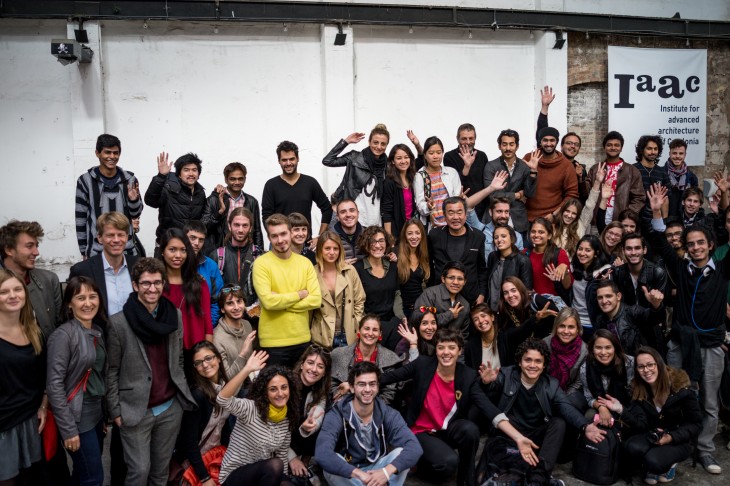Today we had the great pleasure of hosting Kengo Kuma as part of the Fall Lecture Series 2014. Mr Kuma presented his lecture “Smallness”—The World is Moving Toward Small Things, stating that the small project is more exciting than the big project, being a test, or an experiment, in a back and forth process of creativity that does not conclude with the project itself, but represents a mere step in a much greater process. During the lecture, Mr Kuma illustrated his thoughts with a series of projects developed both in academic and professional fields, expressing his interest in the study and investigation of materiality, not as intended in the Industrial era, as a surface material, but rather a substance from which to generate. From stone, to tensegrity, to inflatable structures, their material systems, pushing the research of their adaption to different sizes and complexities Mr Kuma developed his process:
“It was always a natural disaster that directed the course of our civilizations, but the great disaster of 3.11 differed from any other catastrophes since the 1755 Lisbon Earthquake. Nature was desperately forceful as never before. However “strong” or “rational” the structures were, the tsunami flattened Tohoku coastline in seconds. The nuclear accident that followed further revealed the inability of “big and strong” architecture. In front of radiation, concrete or steel meant nothing, even though nuclear energy was a solution for our desire since the Lisbon tragedy, to become bigger, stronger, and more efficient. Now that such a process collapsed on itself, we have to start from scratch. Even before 3.11, I had already been fed up with massive concrete and steel buildings, and began to design a number of small works of architecture. You can build them on your own with nearby materials and be totally independent from strong powers – or rather, dependent solely on the nature. Now I sense that the whole world is shifting toward small things. We are no longer passive creatures who are spoon-fed from a giant yet unreliable system. Each individual starts to nest by him or herself and get energy on his or her own. A new relationship is being formed between people and the world. In the lecture I will discuss how I “minimize” architecture to help this transit.”

